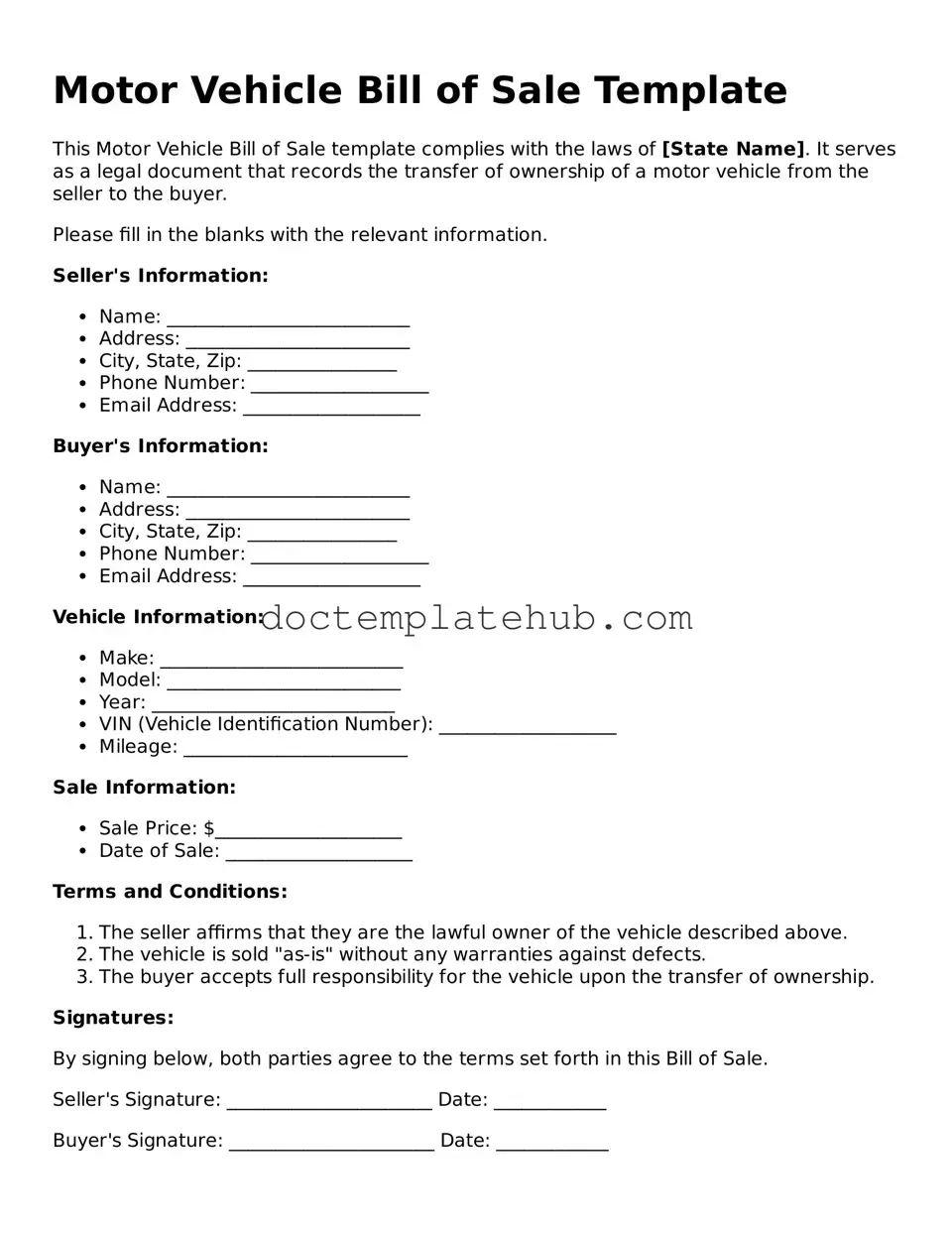The Motor Vehicle Bill of Sale form is similar to a Real Estate Bill of Sale. Both documents serve as proof of transfer of ownership from one party to another. In real estate transactions, the Bill of Sale outlines the details of the property being sold, including the legal description and sale price. Just as with vehicles, this document must be signed by both the buyer and seller to be legally binding. It provides protection for both parties by documenting the terms of the sale.
Another comparable document is the Boat Bill of Sale. This form is used when ownership of a boat is transferred. Like the Motor Vehicle Bill of Sale, it includes essential details such as the make, model, and identification number of the boat, along with the sale price. Both documents help establish a clear record of ownership and can be crucial for registration purposes. The signatures of both parties validate the transaction.
The Motorcycle Bill of Sale shares similarities with the Motor Vehicle Bill of Sale as well. This document is specifically designed for the sale of motorcycles. It includes pertinent information such as the motorcycle's VIN, make, model, and the agreed sale price. Both forms serve to protect the rights of the buyer and seller, ensuring that the transaction is legally recognized and that ownership is properly transferred.
In the realm of personal property, the General Bill of Sale is another document that resembles the Motor Vehicle Bill of Sale. This form can be used for a variety of personal items, from electronics to furniture. It outlines the specifics of the item being sold, including its condition and price. Just like the Motor Vehicle Bill of Sale, it requires signatures from both parties to validate the sale, providing a clear record of the transaction.
A Business Bill of Sale is also akin to the Motor Vehicle Bill of Sale. This document is used when a business is sold, detailing the assets being transferred, including inventory, equipment, and sometimes the business name itself. Both documents require the identification of the seller and buyer, along with a description of the items being sold. The signatures of both parties confirm the agreement, ensuring that the transaction is legally binding.
The Equipment Bill of Sale serves a similar purpose for heavy machinery and equipment sales. This document lists the equipment being sold, including its specifications and condition. Like the Motor Vehicle Bill of Sale, it protects both the buyer and seller by providing a written record of the transaction. Both documents require signatures to be enforceable, ensuring that ownership is officially transferred.
The RV Bill of Sale is another document that closely resembles the Motor Vehicle Bill of Sale. It is specifically used for the sale of recreational vehicles. This form includes details such as the RV's VIN, make, model, and sale price. Both documents ensure that the transfer of ownership is documented, providing legal protection for both the buyer and seller through their signatures.
The Trailer Bill of Sale is similar in function to the Motor Vehicle Bill of Sale as well. This document is used for the sale of trailers, detailing specifications such as the trailer type, size, and identification number. Both forms facilitate a clear transfer of ownership and require signatures from both parties to be legally binding, ensuring that the transaction is properly recorded.
Finally, the Mobile Home Bill of Sale is akin to the Motor Vehicle Bill of Sale. This document is used when a mobile home is sold, outlining the specifics of the home, including its identification number and sale price. Like the Motor Vehicle Bill of Sale, it provides legal protection for both parties involved in the transaction and requires signatures to validate the sale.
